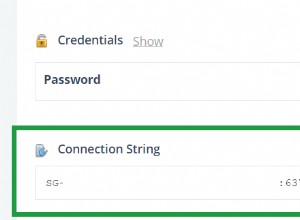Wiem, że to, co próbujesz zrobić, jest możliwe dzięki MongoDB. aggregate() polecenie może przyjąć tyle argumentów, ile potrzebujesz.
W powłoce mongo polecenie takie jak to
db.collection.aggregate(
{ $project: {
_id: 1,
items: 1
} },
{ $unwind: '$items' },
{ $unwind: '$items.images' }
);
rozwinie items poddokument, a następnie images poddokument.
Na podstawie kodu w Twoim pytaniu może to zadziała
$project = array(
'$project' => array(
'_id' => 1,
'items' => 1,
)
);
$unwind_items = array(
'$unwind' => '$items'
);
$unwind_images = array(
'$unwind' => '$items.images'
);
$query = $mongo->store->aggregate($project,$unwind_items,$unwind_images);




